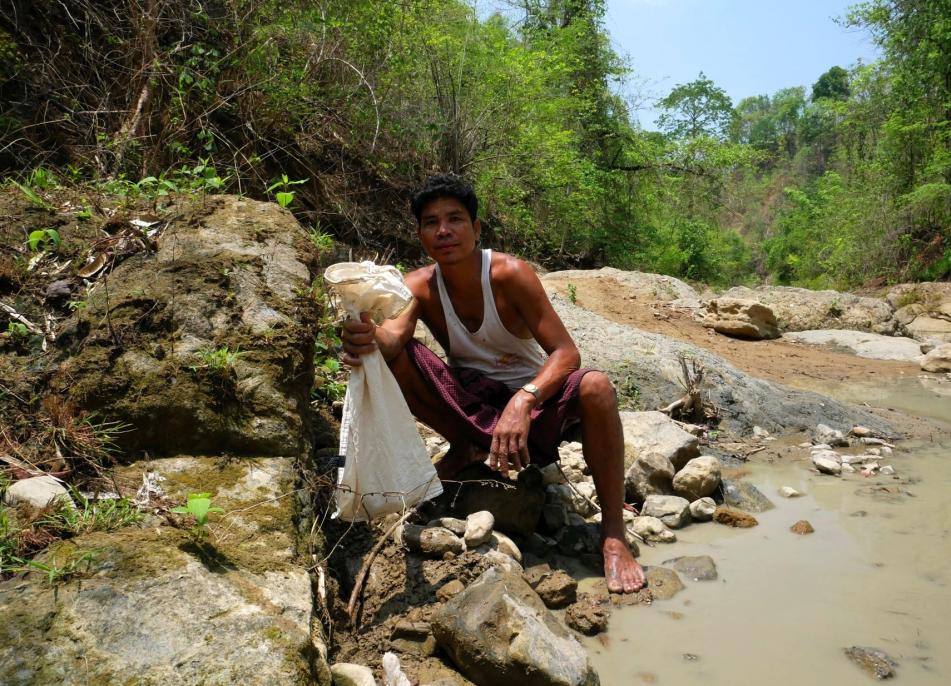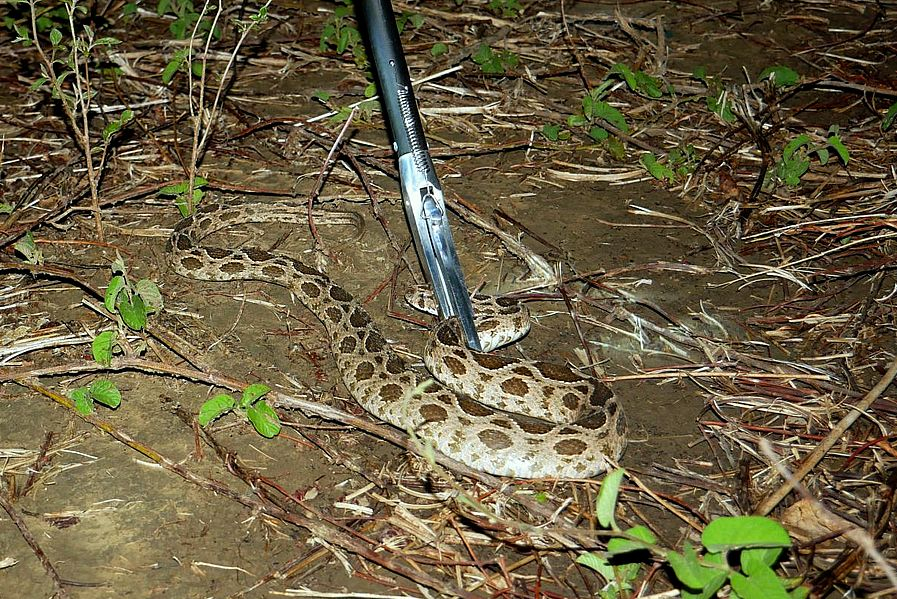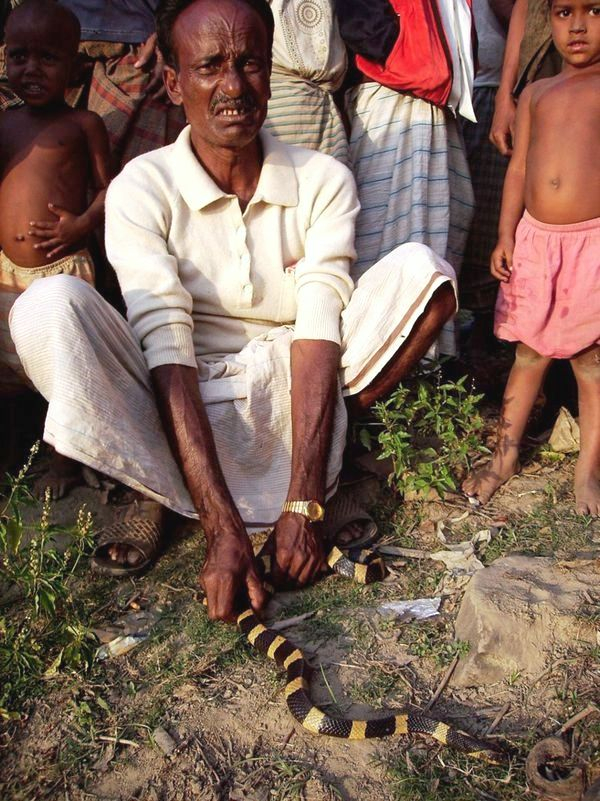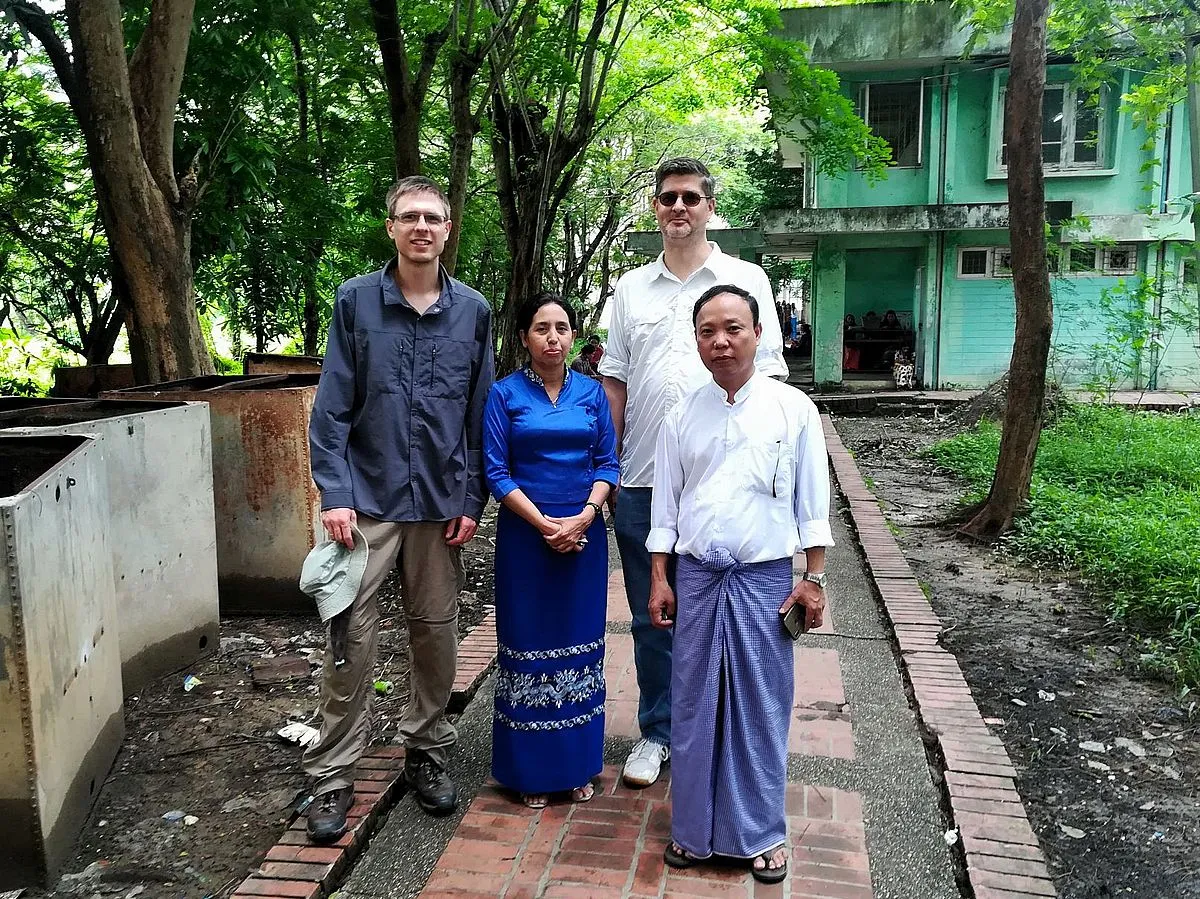
Daniel Jestrzemski
Alliance with the Serpent King
The biologist Ulrich Kuch has been doing intensive research on venomous snakes for years. Now, together with experts in Myanmar, he is looking for a new method to protect people around the world from bites.
Their bites can lead to kidney failure and non-clotting blood; victims bleed from the eyes, nose and mouth. If an effective antidote is not administered quickly enough, they die. Russell’s viper is one of the most feared venomous snakes in Asia – and among rural people it poses a life-threatening daily threat especially to those who work in the rice fields.
Dr. Ulrich Kuch, Goethe University Frankfurt, knows only too well the suffering caused by snakebite and has seen the poverty a family is plunged into when the breadwinner dies or becomes permanently unable to work as a consequence of envenoming. Globally, however, the immense threat to the health and economic well-being of rural populations in the global south has long been neglected. It was not until 2017 that the World Health Organization WHO included snakebite envenoming in the category of neglected tropical diseases of the utmost urgency. Now the aim is to achieve a 50 percent reduction in the number of deaths and severe disabilities caused by snakebite, by 2030. "An ambitious goal," says Kuch, "but it can be achieved: We have been doing research on this problem for many years now and are in a good position to significantly improve on diagnosis and treatment– and on the prevention of snakebite, too."

Good catch in the hills of Bago Yoma, Myanmar: The Russell’s viper is immediately packed for transport to the laboratory.
From legend to research
Snakes have fascinated Ulrich Kuch since childhood. In the course of his scientific career his enthusiasm has taken him halfway around the world, facilitating the formation of an international network of fellow researchers who work on snake toxins beyond the scientific mainstream. In Myanmar – where he is currently conducting the research project supported by the Volkswagen Foundation – snakebite envenoming has been among the top 5 leading causes of death among the rural population since the British colonial occupation – and the importance of this public health problem has not changed much since. The biologist has been working with his colleagues from East Yangon University for many years.
... it brings luck to have such an animal around ...
During one of his stays on site, something happened that prompted his current research idea. During a nighttime overland drive, a banded krait crossing the road was caught in the beam of the car headlights. Kuch and his colleagues decided to capture the highly venomous snake in order to take photographs of it the next day. When they did, farmers on the scene asked if they could get the snake to release it in their rice paddy.
"According to legend, a banded krait is the king of snakes, and it brings luck to have such an animal around," says Kuch. The biological reality behind this belief is that the banded krait eats other snakes but very rarely bites humans, although its venom is highly toxic and can kill humans, too. The farmers wanted to set the banded krait free on their fields to chase away the Russell’s vipers that posed such a threat to them because they believed Russell’s vipers would be scared and go away when they detect the scent of a krait. "There is abundant photographic evidence showing that banded kraits eat other venomous snakes including Russell’s vipers," says Kuch. "However, it was new to us that snakes would be scared off just by its smell, although biologically this is perfectly plausible."
This would be an exciting discovery with the potential to protect people from snakebite. The idea was born: If it can be scientifically demonstrated that Russell’s vipers flee when they smell a banded krait, and if it is possible to identify and synthetically reproduce the scents involved, it could become possible to create olfactory protective barriers to keep Russell’s vipers away from certain areas of key human activity. The idea of developing repellents from the odorous substances of one species of snake to protect against being bitten by another is fundamentally new – and therefore fits in perfectly with the Volkswagen Foundation's "Experiment! funding program.

Dangerous game: Because they rarely bite people, kraits are often handled carelessly, even though they too have a deadly poison.
Experimental setup for vipers
In order to test the hypothesis of the deterrent olfactory efficacy of the banded krait, the team came up with the following research design: Using the labyrinth-like tube structure of an olfactometer, they test the behavior of Russell’s vipers when confronted with a particular scent; for example, that of prey (mice) or harmless water snakes, as well as that of their predator, the banded krait. In the labyrinth of tubes, the viper can choose to go in all directions: It can either approach the source of the odor – or flee from it. If the deterrent effect of krait smell is statistically significant, the next step is to isolate the effective components of the scent and synthesize them. The work of chemical analysis is to be done at the Max Planck Institute for Chemical Ecology in Jena, Germany.

Group photo of snake experts: PhD student Daniel Jestrzemski, Assoc. Prof. Dr. Ni Lar Than, Dr. Ulrich Kuch, Dr. Kyaw Swar Aung in front of the small 'research station' at East Yangon University, Myanmar.
The research team first had to go catch snakes and build up a stock of animals kept in a laboratory on the premises of East Yangon University. In the second phase, the olfactometer will be installed and measurements will be performed. Both the animal population and the experimental setup are to be maintained for further research in Myanmar in the long term. "The one-and-a-half years of project funding under the program will not be enough for us to come up with a finished product," says Kuch. "The research processes are too lengthy and the chemical analyses too complex for that. However, in the time given we are confident that we will be able to achieve usable results that point in the right direction."

